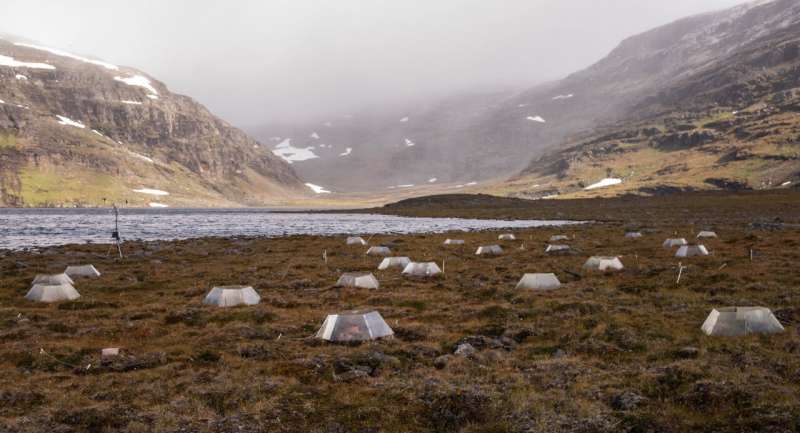Understanding climate warming impacts on carbon release from the tundra

The warming climate shifts the dynamics of tundra environments and makes them release trapped carbon, according to a new study published in Nature. These changes could transform tundras from carbon sinks into carbon sources, exacerbating the effects of climate change.
A team of more than 70 scientists from different countries used so-called open-top chambers (OTCs) to experimentally simulate the effects of warming on 28 tundra sites around the world. OTCs basically serve as mini-greenhouses, blocking wind and trapping heat to create local warming.
The warming experiments led to a 1.4 degrees Celsius increase in air temperature and a 0.4 degrees increase in soil temperature, along with a 1.6 percent drop in soil moisture. These changes boosted ecosystem respiration by 30 percent during the growing season, causing more carbon to be released because of increased metabolic activity in soil and plants. The changes persisted for at least 25 years after the start of the experimental warming—which earlier studies hadn’t revealed.
“We knew from earlier studies that we were likely to find an increase in respiration with warming, but we found a remarkable increase—nearly four times greater than previously estimated, though it varied with time and location,” says Sybryn Maes of Umeå University, the study’s lead author.
The increase in ecosystem respiration also varied with local soil conditions, such as nitrogen and pH levels. This means that differences in soil conditions and other factors lead to geographic differences in the response—some regions will see more carbon release than others. Understanding the links between soil conditions and respiration in response to warming is important for creating better climate models.
…click on the above link to read the rest of the article…